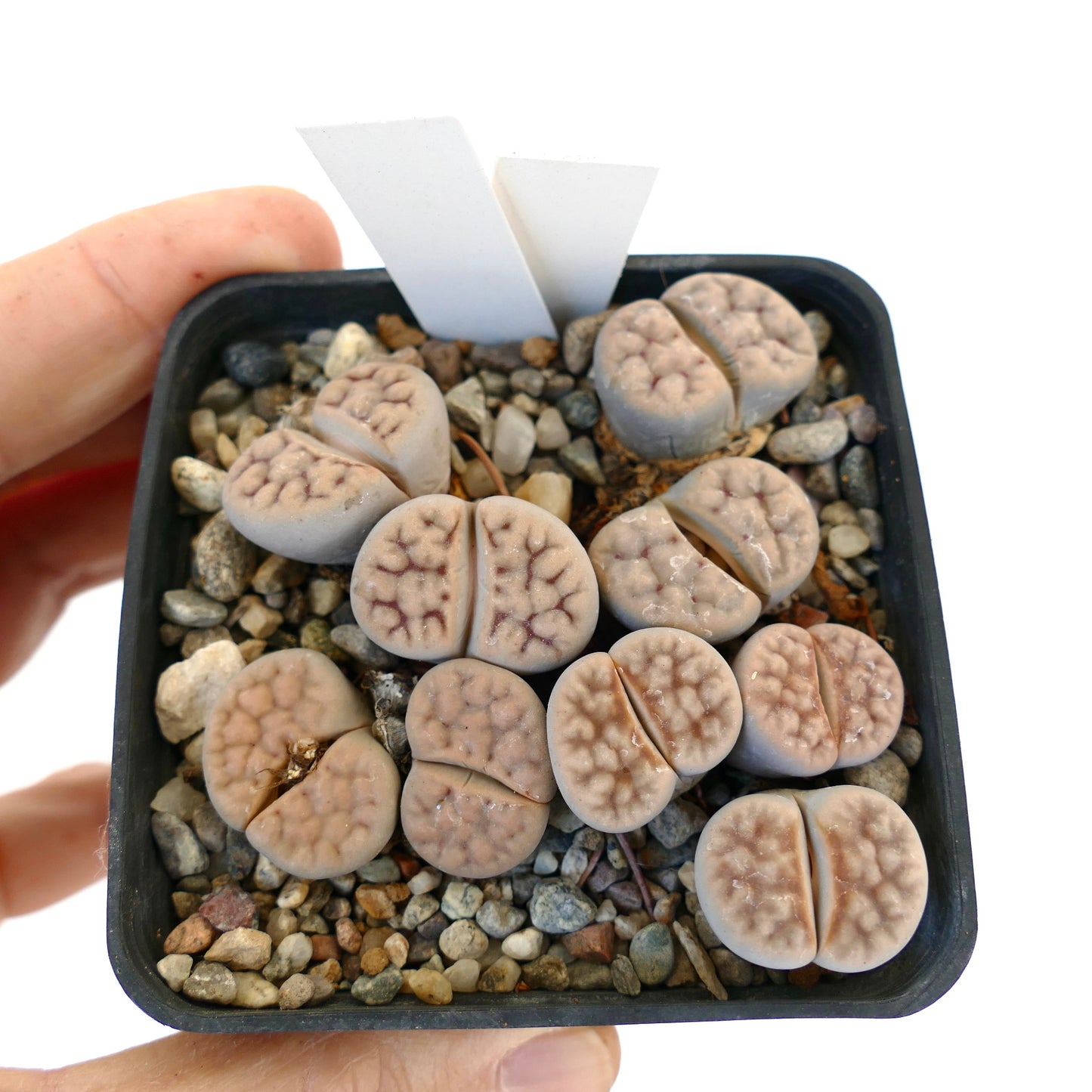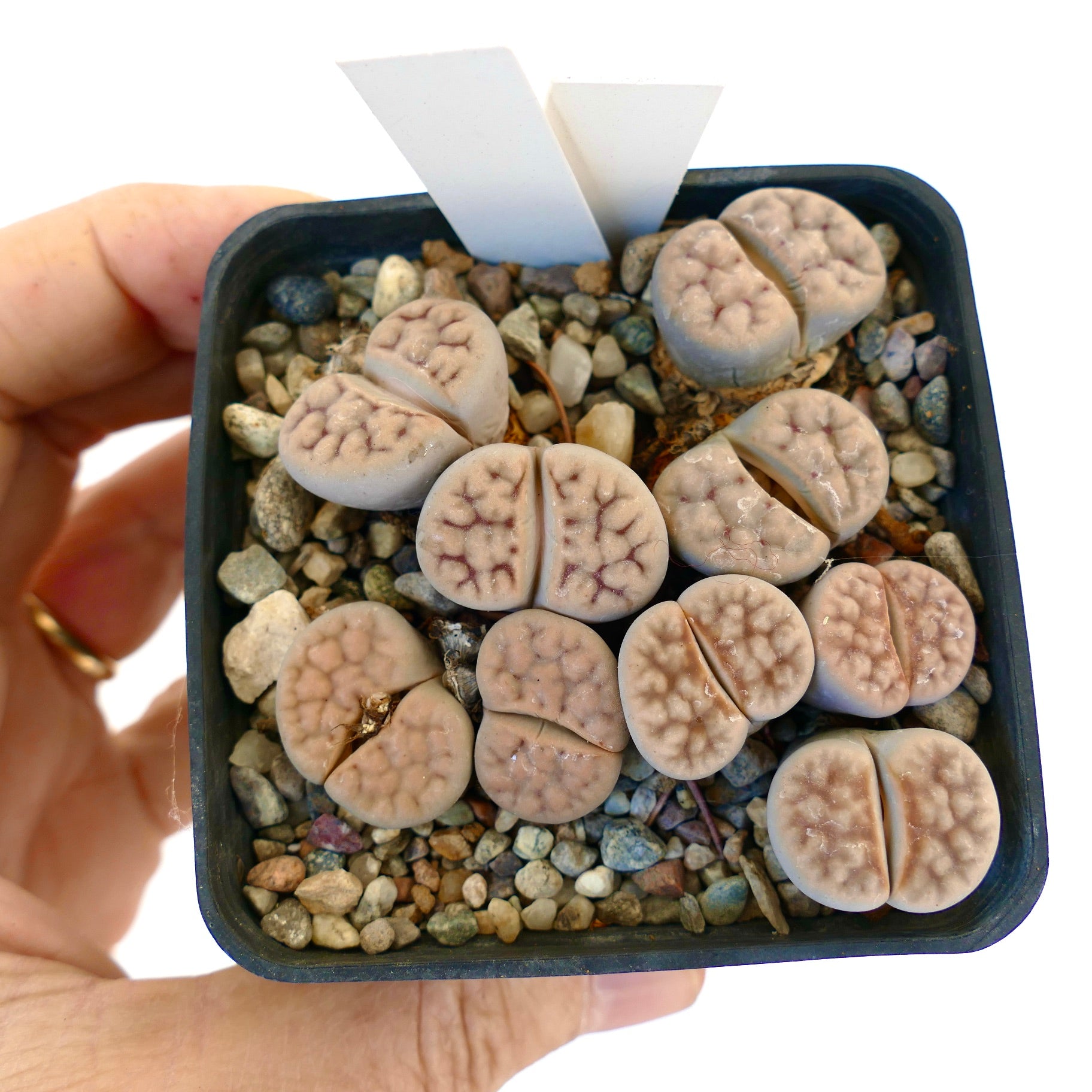- Sigle Speciem
Lithops karasmontana C328 (Signalberg Form) 25 km WNW of Grünau, Namibia
Lithops karasmontana C328 (Signalberg Form) 25 km WNW of Grünau, Namibia
Regular price
€38,00 EUR
Regular price
Sale price
€38,00 EUR
Unit price
per
Tax included.
Shipping calculated at checkout.
Couldn't load pickup availability
Product Description
THE SALE IS FOR ALL PLANTS IN THE POT
Botanical family: Aizoaceae
Botanical genus: Lithops
Botanical species: Lithops karasmontana C328
Cultivation
Cultivation
Info and Disclaimers
Info and Disclaimers
Plant Height:
Plant Diameter:
Pot Size:
Grafted/Not Grafted:
Picture take on:






